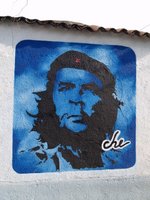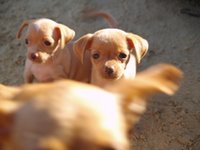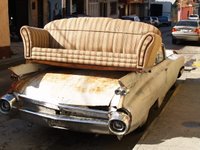Written by Lynn
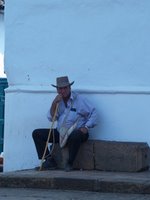 I´ll admit it. I thought the same thing probably everyone is thinking. Stay out of Colombia, it´s dangerous, tourists are constantly getting kidnapped and robbed here, the whole country is under military control, etc, etc. Our original plan was to get to Ecuador and Peru through Brazil, but this is harder than it sounds as there is very little in the way of roads through the interior and it is a huge country to travel through. And all the backpackers we had talked to kept telling us how friendly Colombians were, and how beautiful the country was. So we decided to try it, and we are so very glad we did. In Venezuela we found a lot of people were quite unfriendly, and unwilling to take the time to try and understand our stuttering spanish and sign language. Help for things as simple as finding washrooms was often
I´ll admit it. I thought the same thing probably everyone is thinking. Stay out of Colombia, it´s dangerous, tourists are constantly getting kidnapped and robbed here, the whole country is under military control, etc, etc. Our original plan was to get to Ecuador and Peru through Brazil, but this is harder than it sounds as there is very little in the way of roads through the interior and it is a huge country to travel through. And all the backpackers we had talked to kept telling us how friendly Colombians were, and how beautiful the country was. So we decided to try it, and we are so very glad we did. In Venezuela we found a lot of people were quite unfriendly, and unwilling to take the time to try and understand our stuttering spanish and sign language. Help for things as simple as finding washrooms was often  handed out grudgingly. Here in Colombia it is pretty much the opposite. Within the first few days of being in Colombia we had several people on buses and taxis REALLY try to have conversations with us, constantly repeating themselves and speaking as slowly as they could. We had someone on a bus get off with us to
handed out grudgingly. Here in Colombia it is pretty much the opposite. Within the first few days of being in Colombia we had several people on buses and taxis REALLY try to have conversations with us, constantly repeating themselves and speaking as slowly as they could. We had someone on a bus get off with us to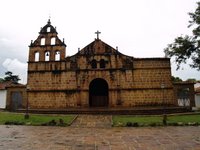 help show us a hotel, a woman on the street stop when she heard us speaking english in order to direct us to an Australian owned hostel and people just bending over backwards to help out. We have gotten phone numbers, email addresses, helpful advice and are really enjoying ourselves. AND, as an added bonus, the food is much better, though that may be because people are actually sending us to good restaurants and helping us order. There are a few strange additions to our culinary adventure. The other
help show us a hotel, a woman on the street stop when she heard us speaking english in order to direct us to an Australian owned hostel and people just bending over backwards to help out. We have gotten phone numbers, email addresses, helpful advice and are really enjoying ourselves. AND, as an added bonus, the food is much better, though that may be because people are actually sending us to good restaurants and helping us order. There are a few strange additions to our culinary adventure. The other 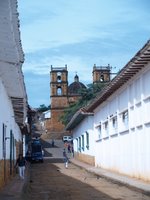 day I had a mexican pizza with corn chips and mustard (?!) on it. As for the military and police, admittedly they are everywhere and the buses and cars are stopped regularly at check points on the main roads. But they are always courteous, and quick, and as a result of the increased visibility of the authorities, the petty crime rate is very
day I had a mexican pizza with corn chips and mustard (?!) on it. As for the military and police, admittedly they are everywhere and the buses and cars are stopped regularly at check points on the main roads. But they are always courteous, and quick, and as a result of the increased visibility of the authorities, the petty crime rate is very 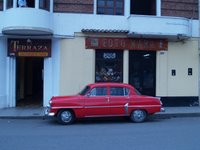 low in Colombia. We had more problems in Venezuela on the way to Los LLanos when our truck was stopped and everyone had to pull apart their bags for a complete inspection (unfortunately we had our full back packs with us, so this took quite awhile). Thankfully there was an guy from England with us who was fluent in Spanish and was able to explain why we had so much and what exactly all those funny little gadgety things were for. The biggest problem we had was trying to communicate what my disposable contacts were. We are
low in Colombia. We had more problems in Venezuela on the way to Los LLanos when our truck was stopped and everyone had to pull apart their bags for a complete inspection (unfortunately we had our full back packs with us, so this took quite awhile). Thankfully there was an guy from England with us who was fluent in Spanish and was able to explain why we had so much and what exactly all those funny little gadgety things were for. The biggest problem we had was trying to communicate what my disposable contacts were. We are  presently staying in a small town called San Gil. To get here we had to drive through a pretty spectacular series of mountain roads that rival anything Europe has to offer. If you don´t take the bus, and instead pay a little more for a taxi or mini bus, you cut several hours off your trip. But it´s best to not be faint hearted and have a strong stomach, because these drivers do not seem to be capable of slowing down! They pass going around hairpin curves, and it is not unusual to have 3 cars across on a 2 lane road.
presently staying in a small town called San Gil. To get here we had to drive through a pretty spectacular series of mountain roads that rival anything Europe has to offer. If you don´t take the bus, and instead pay a little more for a taxi or mini bus, you cut several hours off your trip. But it´s best to not be faint hearted and have a strong stomach, because these drivers do not seem to be capable of slowing down! They pass going around hairpin curves, and it is not unusual to have 3 cars across on a 2 lane road. 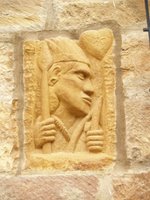 San Gil is Colombia´s self proclaimed adventure activity capital. I went on a white water rafting trip one day, and we had plenty of opportunites for trekking. We did a trek in between two colonial towns,
San Gil is Colombia´s self proclaimed adventure activity capital. I went on a white water rafting trip one day, and we had plenty of opportunites for trekking. We did a trek in between two colonial towns, 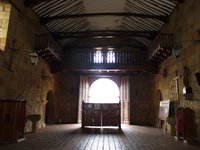
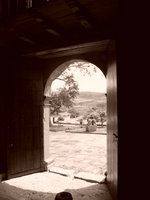 Guane and Barichara, on a historic trail made of cobbled stones with embedded fossils visible in many of them. We also went to see the Salto de Mica waterfall, though we decided against the rappelling down the rock face on old, rather worn looking ropes. Tomorrow we´re off to another colonial town called Villa de Levia, which we are very excited about. Sadly the thing we are most excited about is that there is a French bakery there. South American panerias (bakeries) put sugar in ALL their bread, which gives it a strange, sweet flavour, making our sandwiches rather funny
Guane and Barichara, on a historic trail made of cobbled stones with embedded fossils visible in many of them. We also went to see the Salto de Mica waterfall, though we decided against the rappelling down the rock face on old, rather worn looking ropes. Tomorrow we´re off to another colonial town called Villa de Levia, which we are very excited about. Sadly the thing we are most excited about is that there is a French bakery there. South American panerias (bakeries) put sugar in ALL their bread, which gives it a strange, sweet flavour, making our sandwiches rather funny  tasting. On the other hand, we are sad to leave the fruit market here in San Gil where we had breakfast every morning. $0.75 will buy you a towering fruit salad with mango, papaya, apple, watermelon, fresh coconut, cantaloupe and condensed milk. A little more will get you a fresh fruit shake, with an extra dime buying you a couple of raw quail eggs thrown in, shell and all (why, we don´t know).
tasting. On the other hand, we are sad to leave the fruit market here in San Gil where we had breakfast every morning. $0.75 will buy you a towering fruit salad with mango, papaya, apple, watermelon, fresh coconut, cantaloupe and condensed milk. A little more will get you a fresh fruit shake, with an extra dime buying you a couple of raw quail eggs thrown in, shell and all (why, we don´t know).  populated. It´s main source of revenue is the fact that it feeds about 5million of Venezuela´s 6.5 million cows. In the wet months it is almost entirely under
populated. It´s main source of revenue is the fact that it feeds about 5million of Venezuela´s 6.5 million cows. In the wet months it is almost entirely under


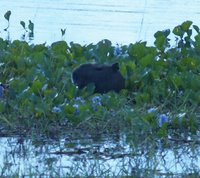
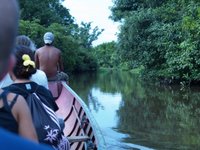


 Luckily, or unluckily, we never managed to find an anaconda. Apparently it´s almost guaranteed in the dry months, but there is just too much water for them to lie in right now. I say luckily, because after a discussion on conservation with our guide, Elli, I´m not sure how I feel about the tourist trade out here.
Luckily, or unluckily, we never managed to find an anaconda. Apparently it´s almost guaranteed in the dry months, but there is just too much water for them to lie in right now. I say luckily, because after a discussion on conservation with our guide, Elli, I´m not sure how I feel about the tourist trade out here. 

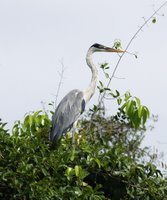


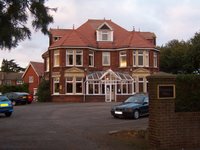


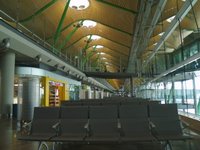
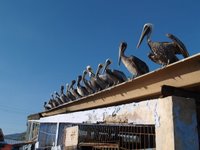
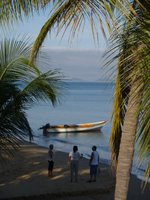 sts about $0.50) to the tiny village of Sante Fe where we rented a room on the beach. Here we met a few girls on solo treks through South America, the one girl from Taiwan doing it with no ability to speak Spanish at all (Spanish is key here in Venezuela as almost no one speaks any english. For
sts about $0.50) to the tiny village of Sante Fe where we rented a room on the beach. Here we met a few girls on solo treks through South America, the one girl from Taiwan doing it with no ability to speak Spanish at all (Spanish is key here in Venezuela as almost no one speaks any english. For